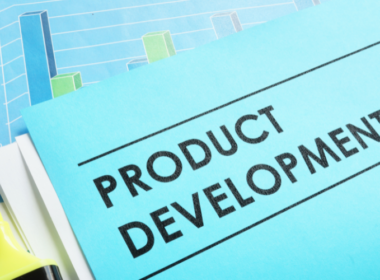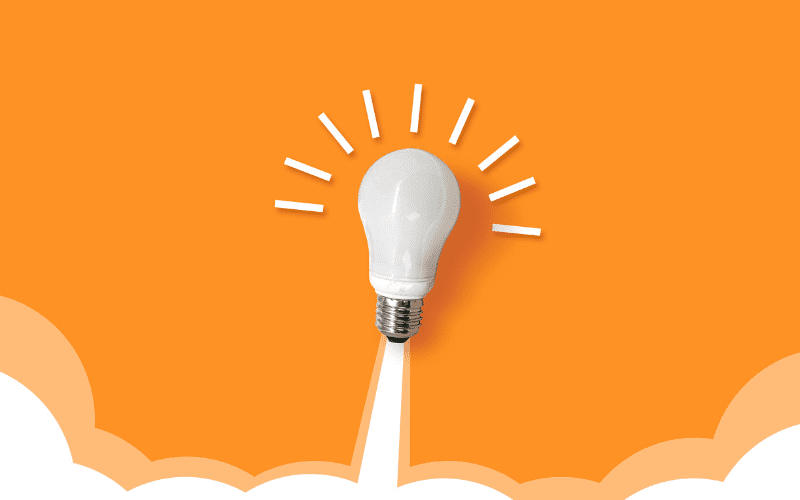The road to project success in today’s very competitive development environment needs to be carefully considered. Selecting the appropriate development approach is the first step in this process. There are several frameworks available, each with its own advantages and workflows, but it’s crucial to choose the best one for the job at hand.
It is impossible to overestimate the significance of this choice. The mismatch between the goals of a project and the development approach that is selected is a major cause of this failure rate. It would probably be awful to try to build a skyscraper with tools meant for carpentry. In a similar vein, attempting to tackle a project that requires flexibility and user feedback using a strict, linear technique would only lead to problems and possibly failure.
This article delves into the intricacies of Design Thinking and Agile, two prominent development methodologies. By dissecting their strengths, differences, and potential for synergy, we aim to equip you with the knowledge required to select the methodology that best aligns with your project goals and propels your project towards success.
Understanding Design Thinking
Design Thinking is an approach to problem-solving that puts the needs of people first and has completely changed how goods and services are created. Its inception dates to the 1950s and 60s, when research on design cognition and design techniques gave rise to it. Pioneers such as Nobel Prize winner Herbert Simon started investigating design as a methodology for solving problems, which helped to establish an organized approach. Since then, design thinking has moved beyond its origins in design and is now widely used in a variety of fields, such as social innovation and business. These days, it’s a potent instrument for taking on difficult problems and encouraging original thinking that puts the user experience first.
The process unfolds in five stages:
- Empathize: This stage builds empathy by observing and interacting with the target audience. Researchers conduct interviews, user observations, and gather data to understand needs, pain points, and aspirations.
- Define: Based on gathered information, the problem statement is refined. Assumptions are challenged, and the core issue is clearly defined to guide further ideation.
- Ideate: Here, creativity takes center stage. Brainstorming sessions generate a multitude of potential solutions, fostering unconventional and innovative ideas.
- Prototype: To test the viability of ideas, low-fidelity prototypes are rapidly developed. These prototypes can be sketches, mockups, or basic functional models for user testing.
- Test: Prototypes are presented to users for feedback. Their reactions and interactions with the prototypes provide valuable insights, allowing for further refinement or iteration of the solution.
Design Thinking excels in identifying problems and involving users. It motivates groups to put themselves in the users’ position and create solutions that genuinely meet their needs.
Transitioning from theory to practice in Agile methodologies can be challenging. Codewave helps companies find their footing with tailor-made Agile solutions that flexibly adapt to their unique project requirements.
Grasping the Basics of Agile
Agile is an umbrella term for iterative and adaptive project management methodologies. It prioritizes flexibility and continuous improvement, allowing projects to adapt to changing requirements. Agile projects are broken down into manageable chunks called “sprints,” typically lasting 1-4 weeks. Each sprint focuses on delivering a specific set of functionalities. Here’s a breakdown of the key processes involved:
- Product Backlog: This prioritized list captures all features and functionalities to be developed for the product.
- Sprint Planning: At the beginning of each sprint, the team selects a set of items from the product backlog to be completed within the sprint timeframe.
- Execution: The team works collaboratively to develop the chosen features during the sprint.
- Daily Stand-Ups: Short daily meetings keep everyone informed about progress, roadblocks, and dependencies.
- Sprint Review: At the end of the sprint, the team demonstrates the completed functionalities to stakeholders and gathers feedback.
- Sprint Retrospective: The team reflects on the sprint’s successes and challenges, identifying areas for improvement in the next iteration.
Agile’s core principles revolve around collaboration, continuous user feedback, and iterative development. The methodology is highly adaptable, allowing teams to react quickly to evolving requirements and user feedback. Additionally, Agile frameworks like Scrum, Crystal, Kanban, and others offer specific structures within the overall Agile approach.
Unveiling the Differences
While both Design Thinking and Agile contribute to successful product development, key differences exist:
Table 1: Unveiling the Differences Between Design Thinking and Agile
| Feature | Design Thinking | Agile |
| Focus | Problem identification and user-centric solutions | Problem solving and iterative development |
| User Interaction | Extensive user research and ongoing testing | User feedback integrated into development cycles |
| Outcomes | Creative solutions, deep user understanding | Functional deliverables, working software |
| Risk Management | Focuses on upfront problem validation through prototypes | Adapts to changing requirements, minimizes waste |
| Team Structure | Cross-functional, may include design specialists | Cross-functional, self-organizing teams |
Design Thinking excels at defining the right problem to solve through user research and creative exploration. Conversely, Agile focuses on delivering functional software iteratively, adapting to changing requirements as the project progresses.
Highlighting the Similarities
Despite their differences, Design Thinking and Agile share valuable commonalities:
- User-centric development: Both methodologies prioritize understanding and addressing user needs. Design Thinking emphasizes upfront user research, while Agile incorporates ongoing user feedback throughout development cycles.
- Iterative processes: Both approaches encourage continuous learning and improvement through iterative cycles. Design Thinking iterates on ideas through prototypes and testing, while Agile iterates on functionality through sprints and reviews.
- Cross-functional teams: Both methodologies encourage collaboration between diverse skill-sets, such as designers, developers, and product managers. This fosters a holistic understanding of the project and user needs.
- Adaptability: Both Design Thinking and Agile are adaptable frameworks. Design Thinking allows for refining the problem definition based on user insights.
Integrating Design Thinking and Agile
While distinct, Design Thinking and Agile can be powerful allies when used together. Combining their strengths leads to a comprehensive development process:
- Complementary nature: Design Thinking helps identify the right problem and potential solutions, while Agile focuses on delivering those solutions iteratively. This creates a well-rounded approach that considers user needs and efficient development.
- Integration strategies: Here are some practical tips for integrating Design Thinking and Agile:
- Start small: Begin by incorporating Design Thinking elements into a single sprint or project phase. This allows for controlled experimentation and learning.
- Cross-functional teams: Foster collaboration between designers, developers, and other stakeholders throughout the process. This ensures user-centricity remains at the core of development.
- Balance design and development: Allocate time and resources for both user research and iterative development. This balance is crucial for creating solutions that are both innovative and feasible.
Examples abound where successful integration has led to impactful products. Consider the development of a new mobile banking app. Design Thinking can help identify user pain points and desired functionalities. Agile sprints can then focus on developing and testing those features iteratively, incorporating user feedback along the way. This synergy between problem-finding and problem-solving leads to a user-friendly and valuable mobile banking experience.
However, integration also presents challenges:
- Managing timelines: Design Thinking can be a time-intensive process. Finding the right balance with Agile’s focus on rapid iterations requires careful planning and prioritization.
- Team buy-in: Integrating new methodologies requires buy-in from all stakeholders. Clear communication and training can help bridge any knowledge gaps and ensure successful adoption.
Solutions to these challenges include:
- Phased approach: Consider using Design Thinking upfront to define the problem and core functionalities. Then, transition to Agile for iterative development and testing.
- Agile training for designers: Equipping designers with Agile principles fosters a shared understanding and facilitates collaboration across teams.
Deciding Between Design Thinking and Agile
The choice between Design Thinking and Agile hinges on several factors:
- Nature of the problem: For well-defined problems with known solutions, Agile might be a better fit. Conversely, if the problem is unclear or user needs are not well understood, Design Thinking can provide valuable direction.
- Development process: Consider the desired level of flexibility and iteration. Agile excels in rapidly adapting to changing requirements, while Design Thinking offers a more structured approach for initial exploration.
- Organizational culture: Assess your team’s openness to new methodologies and their comfort level with user-centric approaches.
Ultimately, the best approach may lie in a hybrid model that leverages both Design Thinking and Agile for optimal outcomes.
Deciding between Design Thinking and Agile can often feel like an overwhelming task. Codewave‘s consultancy services provide the clarity and direction needed to choose the right path, tailored to your organization’s culture and the specific nature of your problem.
Conclusion
Design Thinking and Agile, though distinct methodologies, share a common goal: creating successful products that meet user needs. Understanding their strengths, differences, and potential for integration empowers teams to choose the most appropriate approach for their project. By carefully considering the nature of the problem, the desired development process, and your organization’s culture, you can leverage these powerful methodologies to achieve project success and user satisfaction.








